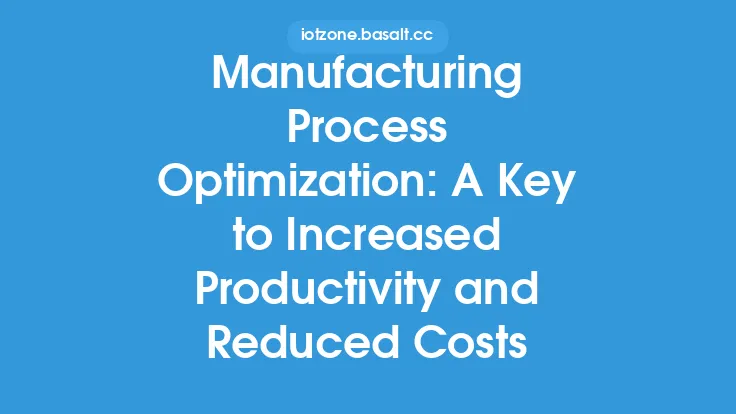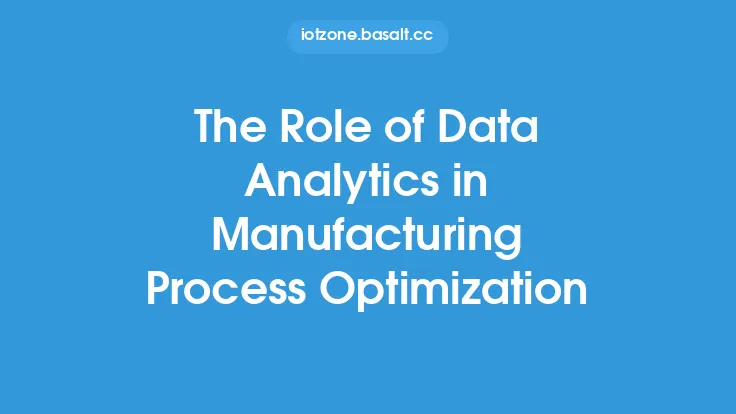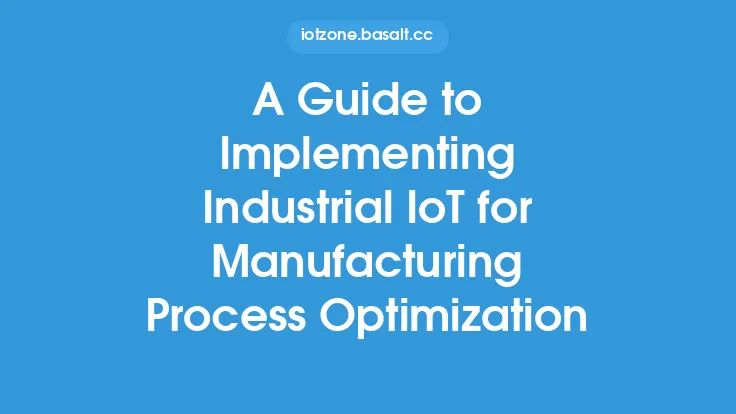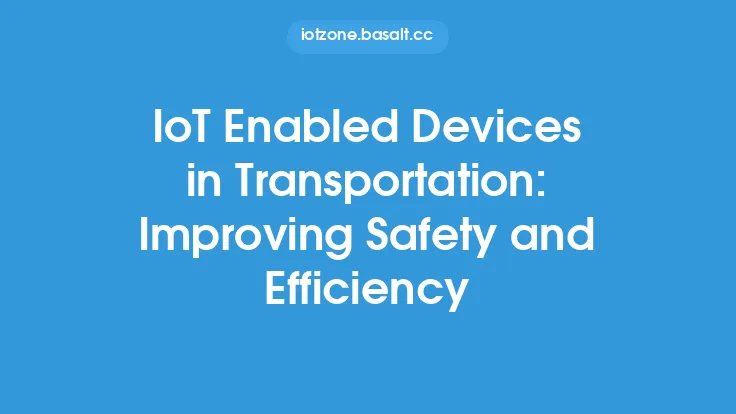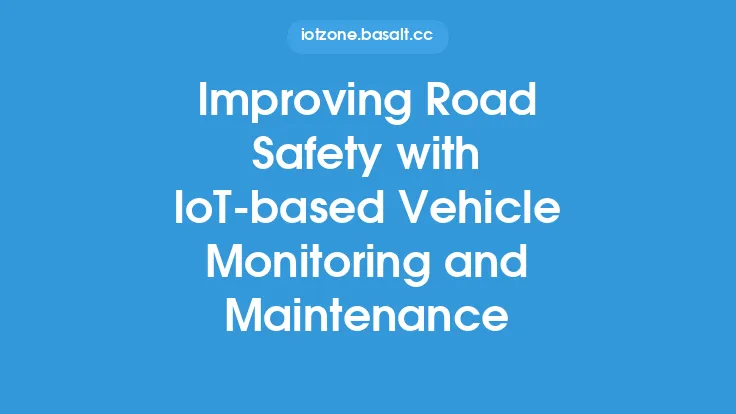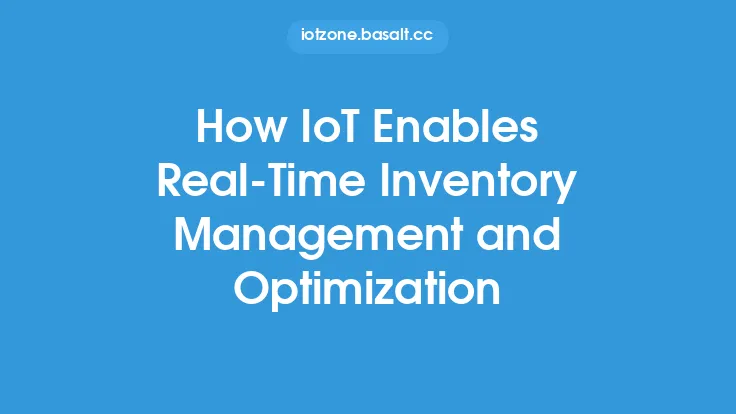The advent of the Industrial Internet of Things (IIoT) has revolutionized the manufacturing sector by providing unparalleled opportunities for process optimization. By leveraging IIoT technologies, manufacturers can now collect and analyze vast amounts of data from various sources, including sensors, machines, and other devices, to identify areas of inefficiency and implement targeted improvements. This article will delve into the world of IIoT-enabled process optimization, exploring the key concepts, technologies, and strategies that are transforming the manufacturing landscape.
Introduction to IIoT-Enabled Process Optimization
IIoT-enabled process optimization involves the use of advanced technologies, such as sensors, actuators, and data analytics, to monitor and control manufacturing processes in real-time. This enables manufacturers to identify areas of inefficiency, predict potential issues, and implement corrective actions to optimize production workflows. By leveraging IIoT technologies, manufacturers can improve product quality, reduce waste, and increase overall efficiency, leading to significant cost savings and improved competitiveness.
Key Technologies Driving IIoT-Enabled Process Optimization
Several key technologies are driving the adoption of IIoT-enabled process optimization in manufacturing, including:
- Sensors and Actuators: These devices enable real-time monitoring and control of manufacturing processes, providing valuable insights into production workflows.
- Industrial Ethernet: This technology provides a reliable and secure communication infrastructure for IIoT devices, enabling seamless data exchange and analysis.
- Data Analytics: Advanced data analytics tools, such as machine learning and artificial intelligence, enable manufacturers to extract valuable insights from IIoT data, identifying areas of inefficiency and predicting potential issues.
- Cloud Computing: Cloud-based platforms provide a scalable and secure infrastructure for IIoT data storage and analysis, enabling manufacturers to access critical information from anywhere, at any time.
Implementing IIoT-Enabled Process Optimization
Implementing IIoT-enabled process optimization requires a structured approach, involving several key steps:
- Assessing Current Processes: Manufacturers must first assess their current production workflows, identifying areas of inefficiency and opportunities for improvement.
- Selecting IIoT Technologies: Manufacturers must then select the most suitable IIoT technologies for their specific needs, considering factors such as scalability, security, and cost.
- Deploying IIoT Devices: IIoT devices, such as sensors and actuators, must be deployed throughout the manufacturing facility, providing real-time monitoring and control of production workflows.
- Analyzing IIoT Data: Advanced data analytics tools must be used to analyze IIoT data, extracting valuable insights and identifying areas of inefficiency.
- Implementing Corrective Actions: Manufacturers must then implement corrective actions, based on IIoT data analysis, to optimize production workflows and improve overall efficiency.
Benefits of IIoT-Enabled Process Optimization
The benefits of IIoT-enabled process optimization are numerous, including:
- Improved Product Quality: IIoT-enabled process optimization enables manufacturers to monitor and control production workflows in real-time, reducing the risk of defects and improving overall product quality.
- Increased Efficiency: By identifying areas of inefficiency and implementing targeted improvements, manufacturers can increase overall efficiency, reducing waste and improving productivity.
- Reduced Costs: IIoT-enabled process optimization can help manufacturers reduce costs, by minimizing waste, reducing energy consumption, and improving overall productivity.
- Enhanced Competitiveness: By leveraging IIoT technologies, manufacturers can improve their competitiveness, responding quickly to changing market conditions and customer demands.
Challenges and Limitations of IIoT-Enabled Process Optimization
While IIoT-enabled process optimization offers numerous benefits, there are also several challenges and limitations to consider, including:
- Security Risks: IIoT devices and data analytics platforms can be vulnerable to cyber threats, compromising sensitive information and disrupting production workflows.
- Data Overload: The vast amounts of data generated by IIoT devices can be overwhelming, requiring advanced data analytics tools and expertise to extract valuable insights.
- Interoperability Issues: IIoT devices and systems from different manufacturers may not be compatible, creating interoperability issues and limiting the effectiveness of IIoT-enabled process optimization.
- Skills and Training: Implementing IIoT-enabled process optimization requires specialized skills and training, which can be a challenge for manufacturers with limited resources and expertise.
Future Directions for IIoT-Enabled Process Optimization
As IIoT technologies continue to evolve, we can expect to see significant advancements in the field of process optimization, including:
- Increased Adoption of Artificial Intelligence: Artificial intelligence and machine learning will play an increasingly important role in IIoT-enabled process optimization, enabling manufacturers to predict potential issues and implement proactive maintenance.
- Growing Use of Digital Twins: Digital twins, virtual replicas of physical systems, will become more prevalent, enabling manufacturers to simulate and optimize production workflows in a virtual environment.
- Greater Emphasis on Cybersecurity: As IIoT devices and systems become more widespread, cybersecurity will become an increasingly important consideration, with manufacturers prioritizing the protection of sensitive information and production workflows.
- More Focus on Sustainability: IIoT-enabled process optimization will play a critical role in sustainable manufacturing practices, enabling manufacturers to reduce waste, minimize energy consumption, and improve overall environmental performance.
